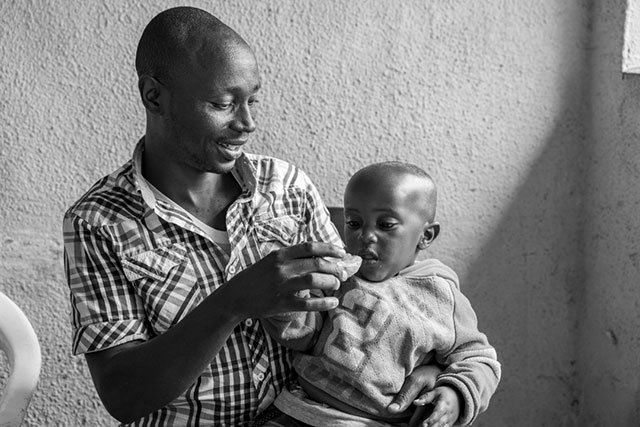
It is 10 AM and we are in Ngera sector of Nyaruguru district, which is almost close to the border of Burundi.
We visit one household of a relatively youthful couple with four kids. On the side, there are a bunch of chickens playing around. We are here to inquire on the nutrition efforts. Asked why they own plenty of chickens; they tell us “Igi ry’Umwana” initiative has facilitated them in fighting malnutrition in their family.
“It is a local initiative in which vulnerable families like ours were given one chicken to facilitate us in giving our children a balanced diet,” Valens Ruganintwali, 43-year old father of the family.
After catering for that one female chicken, it grew to 30 chickens in few years and among those years, our children also improved intellectually, narrates Ruganintwali.
“My elder son used to be among 30s in class, but he is now among the top ten and another one was in the mid-20s, but since consuming this balanced diet, he is now doing well in class, among the best performers, sometimes even the best performer in the class”.
The family’s mother, Pierrine Uwitonze, says that the chickens do not help only in combating malnutrition but highlights that it is also an important tool economic wise.
“Owning a chicken also raised our standards of living, as we also get to sell some eggs and chickens once we have made some incomes. The Rwanda Demographic Health Survey indicated that Nyaruguru district moved from 39.1 percent in 2015 to 34.9 as of today.
Explaining the origin of “Igi ry’umwana initiative”, Genevieve Muhongayire, the head Nutritionist in Ngera sector, she said it was a local initiative born out of saving.
“We combined all parents who receive Shisha Kibondo, and we asked them to start saving and own a chicken each. At the start we saved Rwf 168,000 and all of 864 parents bought a chicken each”, she said.
As of now, each household who were beneficiaries of Shisha Kibondo flour own a chicken.
As of today 43 children in Nyaruguru district are the ones facing the issue of malnutrition, and all of them are being hospitalized to address the vice.
The Early Childhood Development Focal point in Nyaruguru district, Janvier Nsabumuremyi indicates that a total of 1,092ECDs located in the district are based on few main standing pillars: Hygiene, Education, rights of a child, brain awakening/activation.
He highlights that they have designed leaders who are looking after those families that have stunted and malnourished children and provide for them some food components to facilitate their growth.
Why a chicken?
The initiative “Igi ry’umwana” was embraced because an egg is a cheap animal, which easily reproduces and does not require a lot of conditions to grow well.
Moreover, human beings need a nutrient that has enough proteins, of which an egg has in sufficient amounts.
So, it was directed to an expectant mother or a new born baby as they needed protein to help the development of a child (for an expectant mother) and growth for a new born baby. (End)
